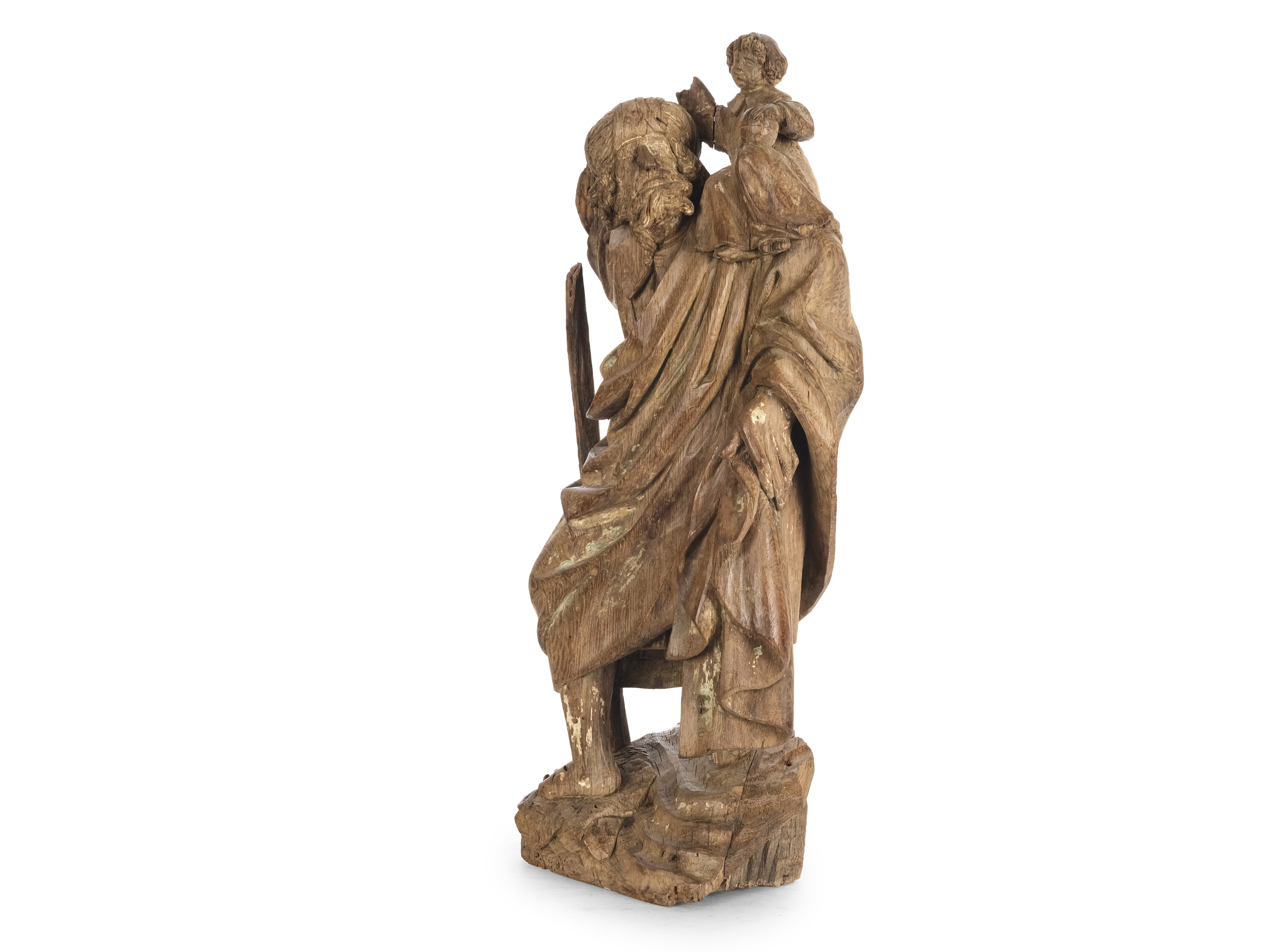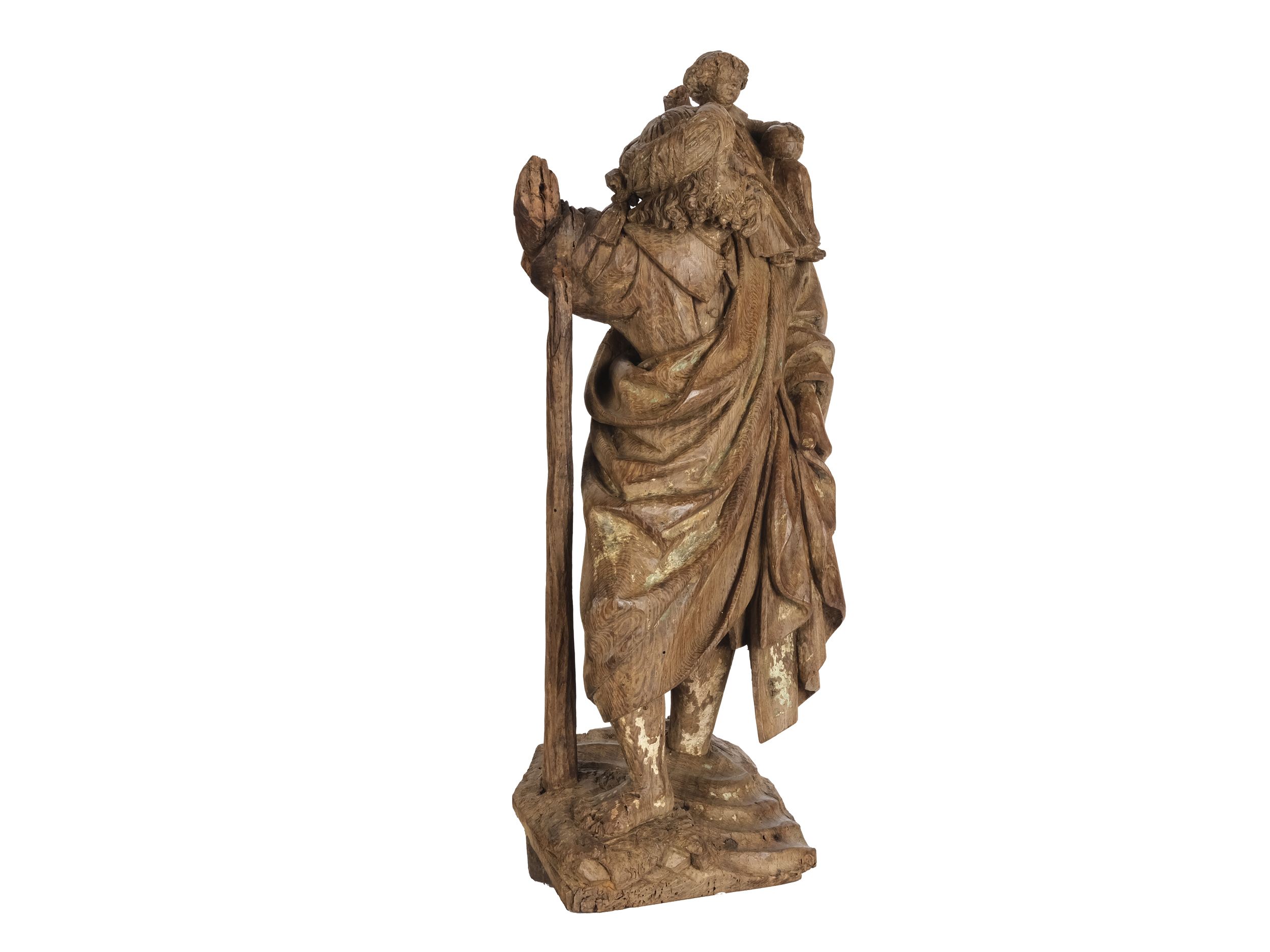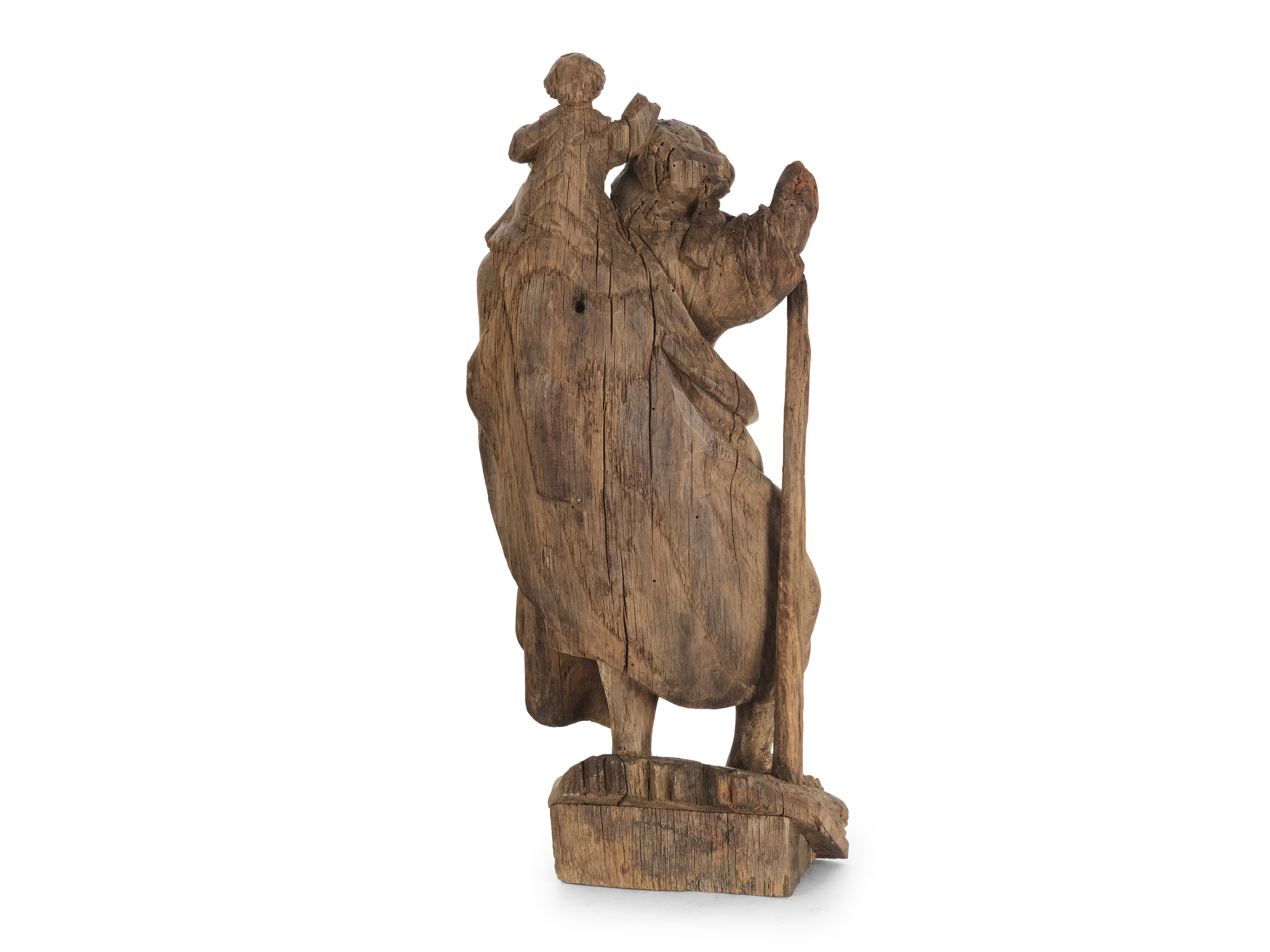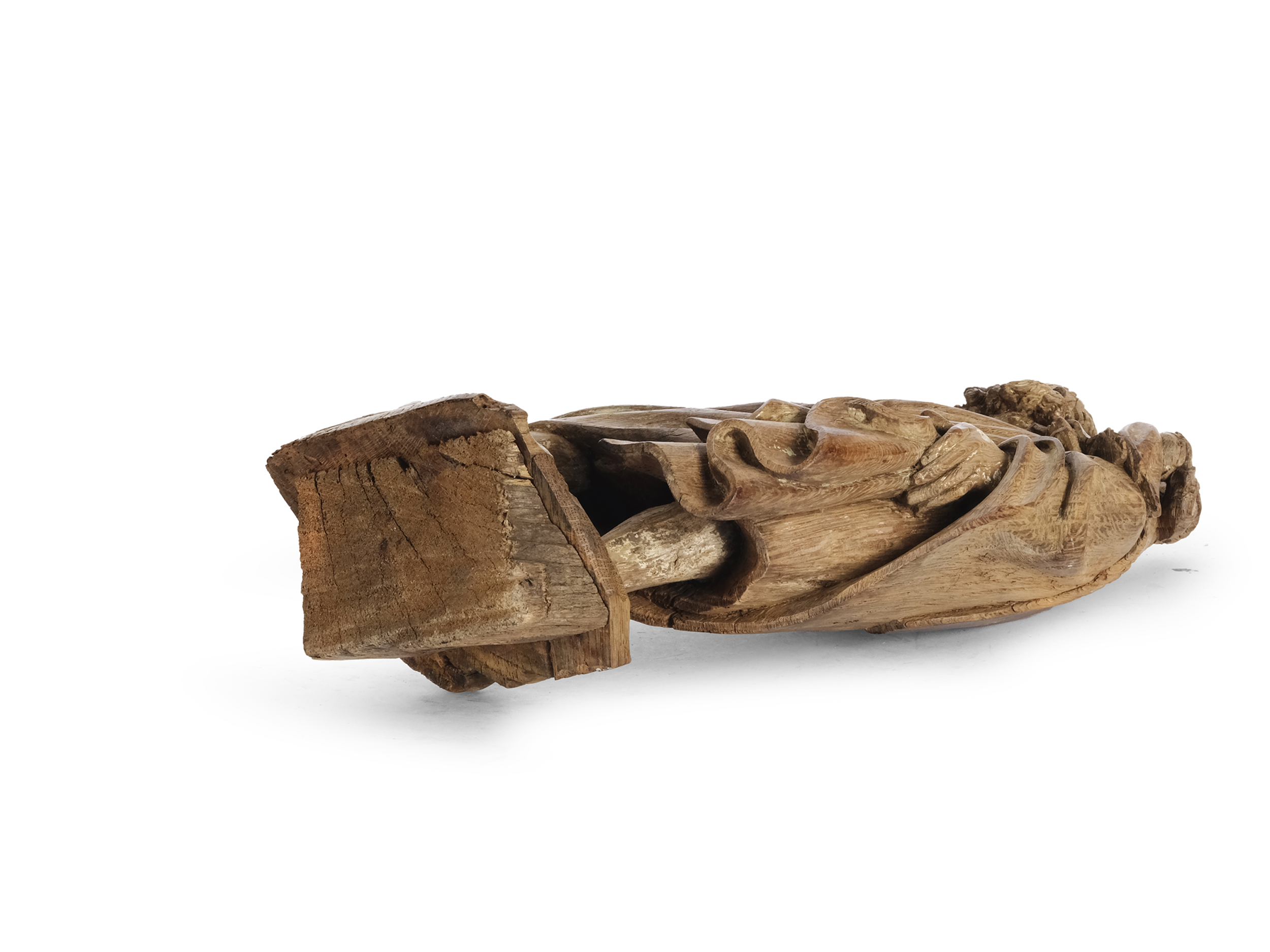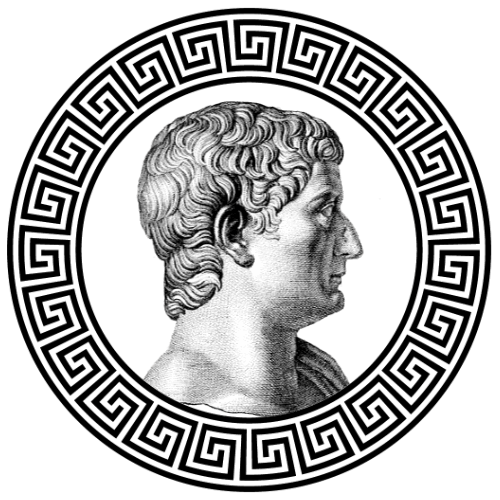Saint Christopher
14th Tiberius Auction
Saint Christopher
Starting price:
€ 4.000
- USD: 4.200 $
- GBP: 3.325 £
Estimated price: € 6.000 / 12.000
| from | to | bid increment |
|---|---|---|
| 0 € | 99 € | 5 € |
| 100 € | 199 € | 10 € |
| 200 € | 399 € | 20 € |
| 400 € | 999 € | 50 € |
| 1.000 € | 1.999 € | 100 € |
| 2.000 € | 3.999 € | 200 € |
| 4.000 € | 9.999 € | 500 € |
| 10.000 € | 19.999 € | 1.000 € |
| 20.000 € | 39.999 € | 2.000 € |
| 40.000 € | ∞ | 5.000 € |
Saint Christopher
Flemish
Around 1480-1500
Carved oak wood
Remains of the original polychromy
Height 38 cm
This high-quality figure shows St. Christopher wading through the raging river with the Christ Child on his shoulders. He is looking up at the child, who is enthroned on his left shoulder. With his left hand, he originally leaned on his staff; with his right, he grasps the lavish cloak to protect it from the water.
There are numerous legends surrounding St. Christopher. While the first depictions of St. Christopher in the Alpine region were created in the second half of the 12th century, the actual legend of St. Christopher did not appear until the 13th century in the Legenda Aurea. Christophorus was commissioned by a hermit to carry people on his back across a dangerous river. One night, he heard the voice of a child calling three times. As he carried the child across the river, his burden became heavier and heavier and the water began to swell. He was almost afraid of drowning because he thought that the whole world was on his shoulders. The child finally dipped him under the water and baptized him, whereupon Christopher recognized him as his Lord, Jesus Christ. This saint was particularly popular in the late Gothic period.
The sculpture is characterized by an extraordinarily dynamic turning movement of the saint: With his right foot propped up as a free leg on a protruding rock and his left firmly anchored in the riverbed, he is braving the deep waters, a fact made clear to viewers by the lifting of his cloak. Nevertheless, the saint’s gaze is not directed forwards along the path, but is raptly fixed on the Christ Child. He is sitting on his shoulder in a jaunty posture with his knees drawn up, his right arm presumably originally raised in a gesture of speaking and blessing, and holding the globe with his left hand, which is balanced on his left knee. It gazes into the distance with a gentle smile. It is highly likely that the narrative moment in which the child reveals himself to the saint as Jesus Christ is depicted here. Christophorus recognizes his true identity and pauses in his movement. This kind of contact and dialogue testifies to the special intimacy in the communication between Christ and Christophorus.
The execution of the figure in the characteristic late Gothic style emphasizes this pause, namely in the curls swirling around the head under the turban-like headdress of Christophorus and his finely carved beard as well as in the complex, voluminous folds of the heavy cloak. The cloak is wrapped around the body in deep, diagonal folds and almost threatens to slip off the body if the saint were not holding the fabric with one hand. At the same time, the fabric wraps around the exposed knee of the figure’s leg, creating a compositional diagonal from the Christ Child down to the knee and thus enlivening the twisted posture of the group of figures.
The composition of this type of representation is related to English alabaster statuettes and reliefs of the 15th and early 16th centuries (e.g. in the Victoria and Albert Museum, London, inv. no. A.18-1921, A.2-1912, A.20-1946, A.21-1946). In its execution, however, the figure is clearly indebted to Flemish sculpture from around 1500, whereby this is expressed not only in the type of wood, but also in the splendor of the curls, the facial physiognomy and the drapery of the robe (cf. e.g. VandA, London, inv. no. 374-1890; Portland Museum of Art, Portland, inv. no. 61.53).
Literature:
Ethan Matt Kavaler, Frits Scholten and Joanna Woodall (eds.), Netherlandish Sculpture of the 16th Century, Netherlands Yearbook for History of Art (vol. 67), Leiden 2017.
Hans Vlieghe, Flemish Art and Architecture 1585-1700, New Haven 1998.
Paul Williamson, Netherlandish Sculpture 1450-1550, London 2002.


